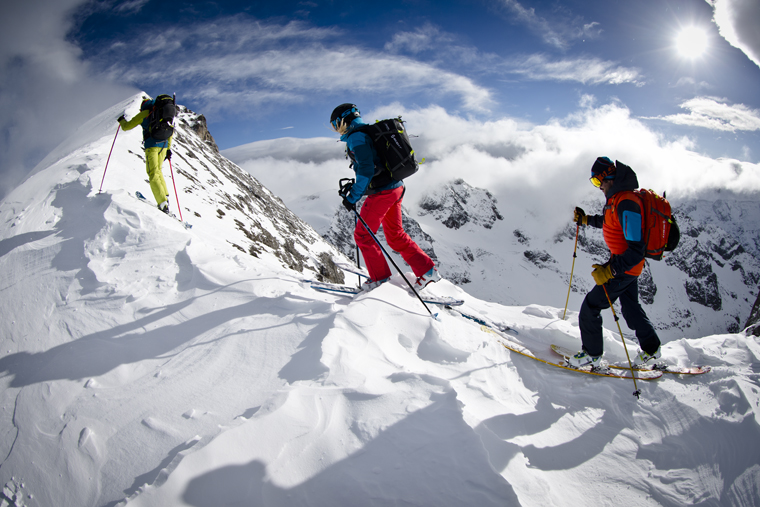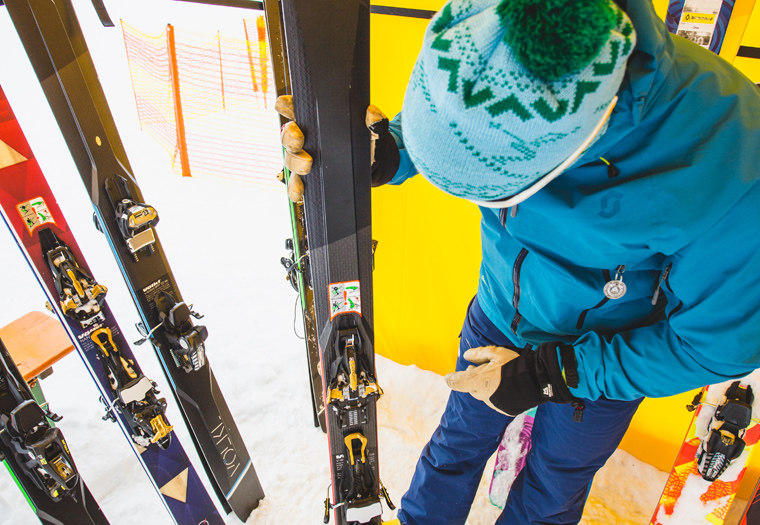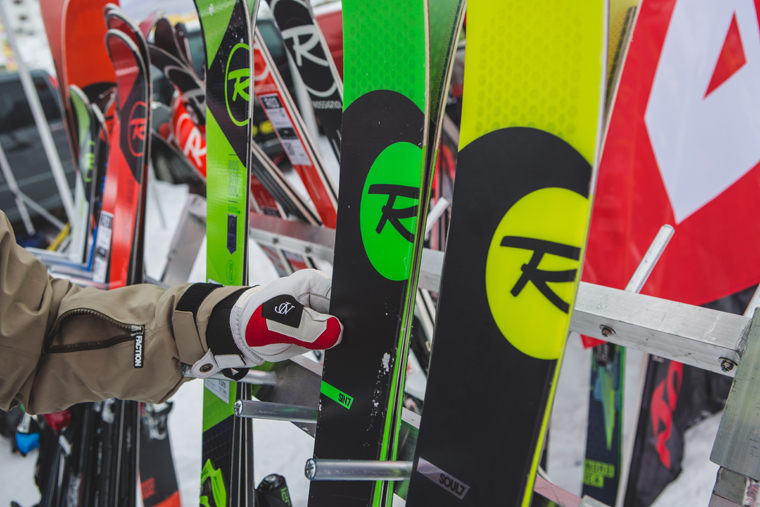What does the future hold for ski design?


Freeride and backcountry skiing has gone from strength to strength over the last few years with more and more people looking to move off the groomed pistes to seek new challenges. A few years back it was all about twin tip freestyle skis in the park, now the innovation seems largely reserved for better tools to deal with un-groomed snow of every variety. Design has come a long way since Shane McConkey pioneered fat rockered skis but have we hit the limits and if not, what comes next?
I posed the question to a number of ski companies and their answers give us a glimpse into ski design and what the future holds. So over to Luke Jacobson, VP and Engineer for Moment, Franz Marsan, Product Line Manager for Big Mountain and Freeride skis at Rossignol, Daniel Tanzer, Scott’s Product Manager Ski & Ski Acc’s and Patrick Wesch, Head of Völkl’s Development of Freeride and Touring products.
Luke: ‘I don’t think so. Things definitely come in waves. The last ten years or so we have seen tons of advances in ski design. Wider and wider skis, more and more rocker. Then everyone realised things were getting a little ridiculous and you could get better results with blending the two. ‘
Franz: ‘For over 100 years, Rossignol skis have always evolved and this is a philosophy that will not stop. The manufacturing process is still handcrafted, and we are always striving to improve. Some radical evolution may come to the market in the comings years…’
Daniel ‘We have reached the next level in ski design currently. Lightweight construction whilst maintaining the same performance. For Scott this is due to our elliptic sandwich construction, which in combination with lightweight wood cores and carbon Kevlar fibres, gives us our next progression in ski design.’

Patrick: ‘I believe that ski design is still in a state of constant evolution. But the evolution will not be as obvious or even visible as in the past. To change the setup of a rocker or the width of a ski is technically quite simple.
‘This is why we have seen a lot of very creative output from smaller brands that opened the mindset of almost everyone involved in skiing business. Then the bigger brands started to realize that they need to change their point of view for building better skis for a modern approach of skiing.
‘Nowadays, evolution might not be as visible anymore, but the technical requirements behind the development of new gear is as demanding as never before. You might not really see it, but you can feel lighter weight in combination with the same power and stability as before. To realize this, some companies take huge invests in the research and development process. I clearly see an advantage of the bigger brands here that have the financial basis for the full testing process and that is why I would describe the ski design as in a state of “stable evolution”…’
Luke: ‘Right now everyone is trying to make lighter and lighter skis which is cool. From my perspective there has to be a blend between performance and weight. I could easily shave off another couple pounds off every ski in our touring line but the skis would perform like garbage. There are super light skis out there for the consumer that is purely concerned about the uphill. At Moment we prefer the downhill so we try to find that happy medium. ‘
Franz: ‘This is a growing sector of the market, which we have seen a good increase in recently, but it remains really a very small part of the whole ski market. It’s a kind of research category where all the commercial standards can be forgotten, allowing creativity of development for the ski manufacturer.’
Daniel: ‘Lighter weight is where the biggest developments are coming in ski design, without losing performance. Along with this bindings , are also getting lighter and now even touring platforms are having huge improvements in their downhill functions. These bindings are now getting easier to use and this helps improve access to the backcountry. We are seeing a market growth every year of about 5%.’
Patrick: ‘Future backcountry skis need to have three main things:

Luke: ‘Most of the cool things that are happening in composites now are manufacturers splitting a traditional 6k carbon tow into something lighter and making unique weaves with it. This opens up some cool opportunities for unique layups that can be really light and really strong at an affordable level. Again, we need to see how they perform because lighter is not always better.’
Daniel: ‘The use of Carbon and Kevlar will bring lighter and more performance oriented skis to the backcountry market..’

Patrick: ‘We are constantly searching for new material and testing new setups. Just three weeks ago for example we tested a new dampening material inside a Freeride ski. We built eight pairs of skis with different setup cores that combined our traditional woodcore with that new material in different locations. We went skiing with four Testers in various situations to get a full picture of what that material is able to provide. Of course, after just one test loop we were not satisfied with the result but it was super interesting and you might hear of that new stuff sometime in the future…’
Luke: ‘At Moment we are really interested in camber. We have several Triple Camber variations in our collection that give rockered skis more life and more edge hold. We are going to continue to research and develop more variations of this to make skis as versatile as possible.’
Franz: ‘Accessibility for the consumer’
Daniel: ‘It’s a secret! But ultimately its bringing skis to the market that will ski anywhere and perform on varied terrain so we can have fun all over the mountain.’
Patrick: ‘It’s hard to tell if skiing is going to look significantly different in a few years but I would guess not! For me the next big thing in skiing and building skis is true craftsmanship with the combination of fine technologies.
If you talk about the next big product category: I think that a freeride touring ski that is not too wide for on-piste skiing and still wide enough for various snow conditions off piste is the hottest choice for the next season. Take a V-werks BMT94 for example and you have a full carbon jacket, multi-layer woodcore light and 3D.Ridge construction.’

Luke: ‘I think it depends where you live. For me it’s the Deathwish. at 112 underfoot its fat enough for the deep days. It also has Triple Camber Twin Rocker so it can rail a turn like a ski that’s 100 underfoot.’
Franz: ‘Definitely 90-100mm underfoot.’
Daniel: ‘For Europe we see the sweet spot as between 90mm to 100mm for a one ski quiver. In the US they seem to demand around 100mm underfoot.’
Patrick: ‘The perfect widths of a ski pretty much depends on where you are and what your idea of skiing looks like. For an off-piste oriented skier the sweet spot might be 109mm while for a all mountain rider a 90mm ski could be much better. In any case, if I had only one ski I would not go to an extreme. So for example a touring ski should not be narrow like 76mm but rather be 85mm or more…’